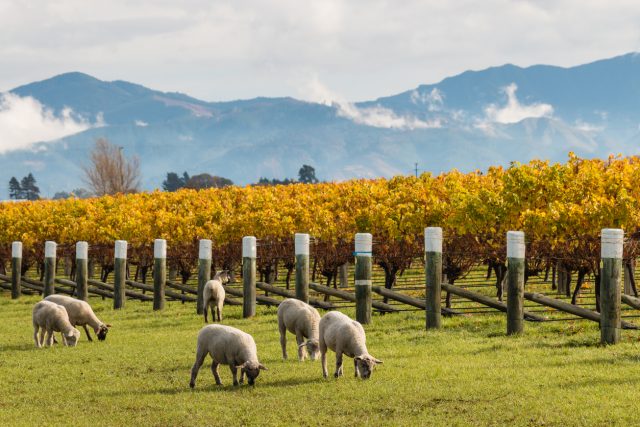This website uses cookies so that we can provide you with the best user experience possible. Cookie information is stored in your browser and performs functions such as recognising you when you return to our website and helping our team to understand which sections of the website you find most interesting and useful.
Easter Lamb Pairings or: How I Learned To Stop Worrying And Love Wine
In spite of its global prevalence, the distinct, sometimes “gamey” flavour of lamb makes it a polarising meat for many in the west. However, one way to learn to love lamb is by finding wine pairings which complement it – but there isn’t a clear formula for success.

To cut a long story sideways, there is no definitive wine to go with lamb. Setting aside differing personal preferences and the near-infinite variations of wine available, there is also the matter of the recipe. Cooking method, sauces, seasonings and side dishes will all alter the flavour profile of a dish. Then there’s the lamb itself: salt marsh lamb from the Gower, Wales, will taste drastically different from New Zealand Te Mena lamb. Lamb’s international appeal has resulted in incredible diversity in the meat itself, and in the recipes. Therefore, instead of finding a specific wine to pair, it’s perhaps more helpful to think of some guiding principles to keep in mind when picking a bottle to go with your Easter meal.
Whipping away the shroud on the mystery of what to pair with lamb are Humble Grape’s group wine buyer Will Hill and executive chef Dane Barnard. Lamb is a regular feature on the menus of the group’s five (soon to be seven) London wine bars/restaurants. Hill explains that ultimately “a great wine pairing is all about eating and drinking what you enjoy. You can worry far too much about the “perfect pairing”, but if you eat what you like and drink what you like then you’re guaranteed to enjoy it all.”
For Hill, an enthusiast of Eastern European varieties found a little off the beaten track, he suggests a grape indigenous to Bulgaria, Melnik 55: “With a little bit of oak it shows a great darker fruit profile with a lick of spice leading to a long, velvety finish. Beautiful with any cut of lamb.” When asked what he might veer away from when serving lamb, he declares “White Zinfandel. To be honest, I’d avoid that regardless of the lamb.”
Barnard is a proponent of the “what grows together, goes together” philosophy. If you’re consuming lamb from New Zealand, then anything from a Central Otago Pinot Noir to a Martinborough Chardonnay could work. If the lamb is from the south west of France, where they eat lamb regularly, perhaps a Cahors Malbec. Likewise, Lebanon has no shortage of lamb dishes, and the Beqaa Valley has no shortage of producers creating wines that could complement them. For something closer to home, a Welsh wine, such as White Castle Vineyard’s Rondo “Harry”, could well work.
Experience is lived in the mind, and you and your guests may well enjoy a dish more with a wine from its homeland because it feels like the right thing to do. Whether the pairing would hold up to a blind tasting doesn’t matter, as you won’t be drinking your Easter wine blind. Perception of pairings can all too easily be informed by a label.
From Shiraz to Chardonnay, there is no single flavour profile to suit. White wine can work as it cuts through the richness of the meat, though red is perhaps a more classic pairing as it has the robustness to not be overpowered by the complex, strong flavour. Hill isn’t fussed about acidity levels and tannins. Favouring feeling over data may go against expertise, but it’s an approach which could well gain favour among those who feel alienated by the unwritten rules of wine pairings.
The lamb conundrum raises questions about how we perceive the rigidity of these rules. Red wine and fish was long held to be an impossible combination, but even the arbiter of traditional Gallic gastronomy himself, Keith Floyd, called the rule a “myth”. Furthermore, not all palates are created equal: one man’s perfect pairing might be a ghastly clash to another. There are a great many variables within a dish, so finding a wine which resonates with each and every component verges on a Sisyphean task.
What this encourages isn’t a search for perfection, but a greater understanding of how the flavours of a dish are layered. To find your personal preference, the surest method is experimentation. Try a variety of wines with a variety of lamb dishes and find which has that often elusive symbiotic relationship, with each sip elevating each bite and vice versa. It may be the case that with the right wine, your favoured recipe might change.
This is all on brand for Humble Grape, with the company striving to remove perceived pretension from the world of wine. Many of the descriptions of their wines rely on vivid imagery, rather than a technical breakdown. For example, their Passion De Los Andes Malbec is compared to “a smouldering James Dean in a leather jacket smoking a hand-rolled fag in the dark corner.”
Hill suggests that preoccupying yourself with the search for the one true wine can end up just being a waste of time: “I’m sure a sommelier would disagree”, he concedes.

